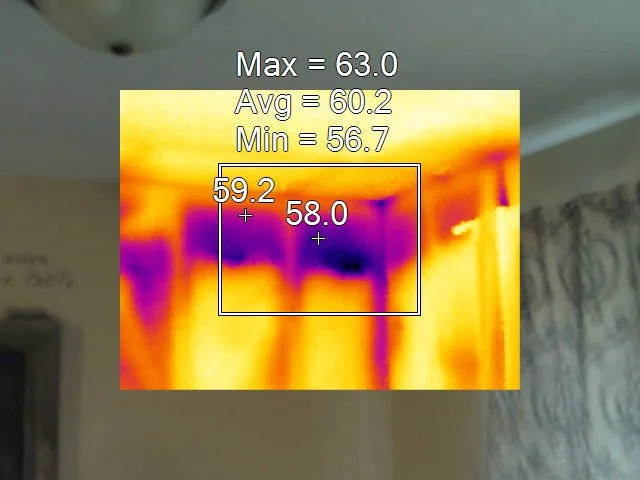
For Homeowners
Whole Home Energy Audits
A Whole Home Energy Audit can help you assess how much energy your home uses, pinpoint where energy loss may be costing you up to 30% of your utility bill, and identify tasks you can take to improve efficiency.
We can determine the efficiency of your home's heating and cooling systems, ways to eliminate drafts and cold areas, and create strategies to conserve hot water, electricity, and heating fuel.
This is the first step to:
• enhance energy efficiency
• lower utility bills
• increase the comfort of your home
• reduce CO2 and improve the environment
• provide a more healthy home
Our Services Include:
Home inspection with state-of-the-art equipment
Utility bill analysis and simulation to offer direction for corrective measures
A personalized listing of energy improvement recommendations specific to your home
Offering solutions to resolve the issues to make you more comfortable and lower your energy costs
A Holistic Approach
EnergyWize looks at your home as a system, a living envelope, inspecting and discovering the best ways to improve it.
For example, when most people think of improving their home, they add insulation or replace expensive windows. However, usually, the culprit is air infiltration, robbing you of energy. Insulating may or may not be the most cost-effective way to provide more comfort or cut energy costs.
To analyze your home, we use the following test equipment and techniques:
Blower Door Test - A blower door is a variable-speed fan mounted in a doorframe, used to pressurize and depressurize a house to measure the extent of air leaks and points of infiltration.
Infrared Camera - An infrared camera shows surface heat variation, which reveals areas of hot or cold energy losses and air leakage in buildings.
Utility Analysis - A unique offering is our ability to review home utility bills, analyzing them for your use of energy, the impact of temperature, and how to identify potential problems.
Audits alone don't save energy – once trouble areas are identified, we offer our recommendations and service to correct the problems. EnergyWize is a single source for identifying and fixing energy problems, limiting your need to find qualified contractors while offering a stress-free and efficient upgrade.
Common Home Energy, Comfort, and Health Problems
High Utility Bills
High utility bills for heating in the winter and cooling in summer can often be traced to air leaks (air infiltration), wasting up to 30% of your home’s energy. There are several items to be checked to limit the escaping energy (see Common Air Leaks below).
Drafty Areas or Rooms and Cold Winter Floors
Cold air flowing through your house can be caused by air leaks in many places, including the basement, crawlspace, drain pipe chases, or around windows causing rooms to feel drafty and uncomfortable. Lack of insulation in walls, at the end of floor joints and under sill plates can cause cold floors and walls.
Hot or Cold Rooms
Differences in room temperatures are caused by inadequate insulation, air leakage, poor duct performance, and improperly installed heating, ventilation, and air conditioning (HVAC) systems. Sealed and insulated ducts can decrease heating and cooling costs as much as 20 percent.
Frost or Fog on Windows
Air leaks around windows or high indoor moisture levels from other air leaks can cause condensation, frost, or pools of water on windows and sills.
Dry Indoor Air in Winter
Air leaks in your home allow warm humid air to escape and draw in drier, colder air.
Icicles and Ice Dams
Without good attic insulation, warm air inside your home leaks into the attic and warms the underside of the roof, causing snow and ice to melt and then refreeze as it runs off your roof — forming icicles and ice dams. Leaks from these formations can drain back into the house, causing damage.
Mold, Mildew, or Musty Odors
Mold and mildew caused by water leaks, high humidity, and damp basements lead to wood rot, structural damage, peeling paint, and a variety of health problems. Mold destroys a home’s value and can be very expensive to remediate. A damp basement caused by moisture migrating through the foundation increases indoor humidity and can promote the growth of mold — resulting in unsafe living conditions. A properly sealed and insulated home resists mold because moist air doesn’t infiltrate. Closed cell insulation retards moisture because the cells are tightly packed together.
Brick Cracking or Chipping and Paint Peeling
Bricks breaking or cracking and exterior paint peeling can be an indication of moisture and humidity problems.
Infrared Camera Pictures Revealing Energy Losses and Air Leakage
Home Energy Loss & Consumption
A home’s net energy loss and consumption is determined by a wide range of factors. There is much more to your heating and cooling system than just a furnace and air conditioner.
A key part of improving a home’s energy use is focusing on three major areas for reducing air leakage and stopping waste.
Sealing air leaks and adding insulation to the entire building envelope.
Improving heating and cooling delivery systems, including sealing ductwork and managing airflow.
Helping to manage the lifestyle of the occupants and inside temperature. The discipline and control of not wasting energy or the automatic control of managing energy via automatic thermostats, light & motion sensors, energy data recording, and light switches are key. A one-degree change in a thermostat can lead to a 3% difference in energy use.
How to Mitigate Air Leakage Through the Building Envelope
A building envelope is the component that separates the exterior of the building from the interior.
As the shell of the building, it affects the ventilation, climate, energy consumption, and protection of occupants and interiors.
Seal up the entire building's envelope by ensuring that all gaps, openings, and leaks are caulked or insulated.
Energy Ratings
It can be confusing!
U factors, R factors, COP and SEER ratings, Kwatts, BTUs, and Window rating stickers are just a few of the confusing items to understand.
What do all the numbers mean?
EnergyWize can help you make sense of it all and offers the help you need to increase your energy efficiency, save money, and provide a more environmentally friendly and healthy home.
The EnergyWize process of first performing an Energy Analysis, identifying and understanding your energy losses, and then implementing a Weatherization Retrofit upgrade is key. Our retrofit processes execute the needed fixes and changes using qualified technicians and years of construction experience.
Weatherization
Once an analysis of your home is done, we help the customer in prioritizing the work and suggest what tasks have higher value and what corrections should be done first to improve your comfort and reduce your energy costs.
The EnergyWize weatherization process includes:
utilizing years of home remodeling and construction experience
use of a variety of technology and techniques to determine your energy inefficiencies
implementing tried and true methods to eliminate wasted energy
Our construction background offers insight into the best ways to resolve any issue.
Most of the weatherization process is focused on air infiltration (especially around doors, windows, vent pipes and chases, bandboard, top sills, and wiring) that penetrates the ceiling and floor. Using various foaming and sealing products and processes, we seal your home and then utilize more traditional processes such as insulation in attics, walls, floors, crawl spaces, and basements, installation of automatic thermostats, more efficient lighting, the addition of power-saving devices, and maintenance or upgrade of HVAC systems and appliances.




















